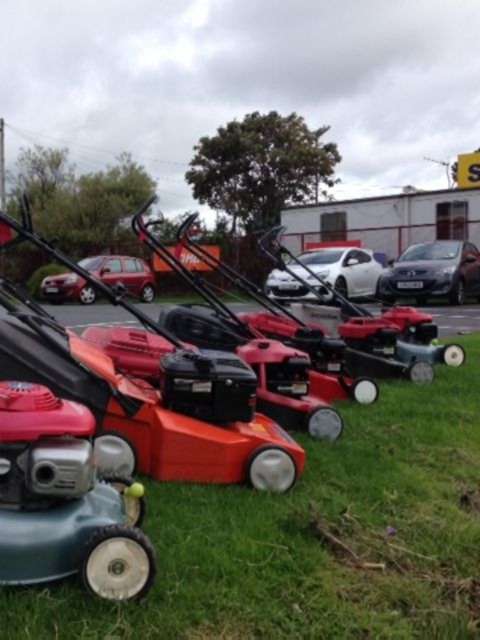
Mowing is important for the health of your grass.
A beautiful, lush green lawn is the pride of many homeowners. However, maintaining a healthy and attractive lawn requires more than just watering and fertilising. Regular mowing is a crucial part of lawn maintenance and is essential for the health and appearance of your grass. But, do you know how to mow your lawn for optimal health and appearance?
In this article, we'll cover everything you need to know about mowing your lawn for the best results. From the height of your mower blades to the frequency of mowing, we'll explore the dos and don'ts of lawn mowing. So, let's get started!
Choosing the right lawn mower is an important decision for keeping your lawn healthy and looking great. Here are some tips to help you choose the right mower:
Consider your garden size: The size of your garden will determine the type of mower you need. For smaller gardens, a push mower, electric or battery mower may be suitable. For larger gardens, a riding mower or a self-propelled mower may be more appropriate.
Look at the terrain: Consider the terrain of your garden. If you have a lot of hills or uneven ground, a self-propelled or riding mower may be easier to use. If your yard is flat and even, a push mower electric or battery mower may be sufficient.
Think about your budget: Mowers come in a range of prices, so consider your budget when making your decision. While a more expensive mower may have additional features, a cheaper option may still be suitable for your needs.
Look at the mower's features: Consider what features are important to you, such as adjustable cutting height or a mulching function. Some mowers also come with additional features like bagging or side discharge.
Read reviews and do your research: Take the time to read reviews and do your research on the different types of mowers available. This can help you make an informed decision and find the right mower for your needs.
In summary, choosing the right mower requires considering the size of your garden, the terrain, your budget, and the features that are important to you. Do your research and take the time to find the right mower for your needs, and you'll be on your way to a healthy and beautiful lawn.
Keep your blades sharp: Sharp mower blades make a cleaner cut, which is better for the health of your grass. Dull blades can tear and damage the grass, making it more susceptible to disease and pests. So, make sure to sharpen your blades regularly.
Don't cut the grass too short: Cutting your grass too short can weaken it and make it more vulnerable to stress, disease, and pests. Aim to mow your lawn when the grass is about 3 inches or 8cm tall, and cut no more than one-third of the blade length at a time.
Vary your mowing pattern: Mowing in the same direction every time can cause the grass to lean in one direction and make it more difficult to cut evenly. Vary your mowing pattern each time you mow to encourage the grass to grow upright.
Mow when the grass is dry: Wet grass can clump and stick together, making it difficult to cut evenly. Try to mow your lawn when the grass is dry.
Dispose of clippings properly: Grass clippings can be left on the lawn as a natural fertilizer, but if you have too many, they can become unsightly and smother the grass. Dispose of excess clippings properly by composting them or adding them to a green waste bin.
One Stop Lawn Care
Spring Starter Lawn Treatment
Get the season off to a great start.
More DetailsEarly Summer Lawn Treatment
Green and strong all summer long.
More Details